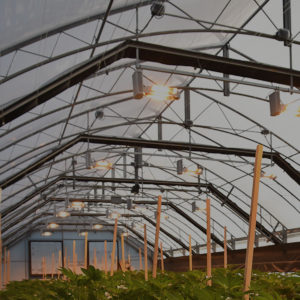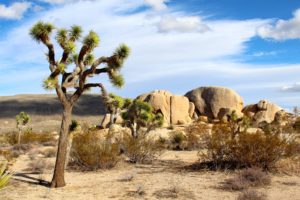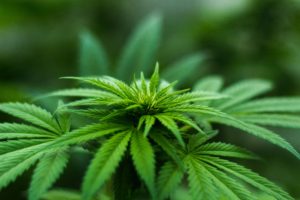20 Jun Successful Greenhouse Management in Hot Climates
Greenhouse growing can be a challenge when growing in humid climates, but hot climate cultivation, like dry desert areas, have their own difficulties.
Any area where a greenhouse is located comes with its own special climate challenges. To overcome these challenges takes research, planning, and intimately knowing the types of plants you intended to grow.
Many people assume California is a perfect paradise for greenhouse growing. 
However, the number of macro and microclimates in the state can be exceptionally challenging for people new to greenhouse growing. To the west, growers have the warm humid air of the Pacific Ocean. On the opposite side of the state, to the east, are vast mountain ranges and deserts.
In fact, variations in Californias climate are so drastic that grapes can thrive in one area but may freeze in a microclimate just a few miles away.
Because of their versatile design, light deprivation greenhouses can operate successfully in any of these microclimates.
With the correct covering and ventilation techniques, you can create a greenhouse that adjusts to the ideal temperature, diffuses light, and eliminates condensation. In these conditions, vegetables, fruits and plants valued for their flowers (like cannabis) can all thrive.
To create those ideal conditions, growers must first understand the two primary macroclimates of California: hot/dry and hot/humid.
These macroclimates are not evenly divided between the state, but are randomly dispersed in pockets throughout.
Greenhouses For Dry/Hot Climates
In hot, dry climates, summer temperatures can remain above 100C for weeks at a time. Clear skies and burning sunlight are a constant.
Greenhouses in these climates should prioritize protecting plants by diffusing the harsh light. This can be accomplished with covers such as SOLARIG, which blocks harmful IR rays while allowing helpful wavelengths through. Because of the diffusion properties, plants receive full light coverage without burning heat. SOLARIG has the additional benefit of protecting plants from high desert winds.
 Growers who are avoiding air conditioners and other electronics must ensure that proper air circulation, ventilation, and temperature control strategies are in place. They can include exhaust fans and intake louvers light traps, so proper airflow is achieved even during blackout mode when sidewall roll ups are unuseable. This will help to keep the plants’ temperature at safe and comfortable levels when outside temps are climbing. Circulation, or horizontal airflow fans, can be used to achieve additional air movement in the upper ridge area of the greenhouse.
Growers who are avoiding air conditioners and other electronics must ensure that proper air circulation, ventilation, and temperature control strategies are in place. They can include exhaust fans and intake louvers light traps, so proper airflow is achieved even during blackout mode when sidewall roll ups are unuseable. This will help to keep the plants’ temperature at safe and comfortable levels when outside temps are climbing. Circulation, or horizontal airflow fans, can be used to achieve additional air movement in the upper ridge area of the greenhouse.
Proper circulation of air can help reduce condensation from building in the greenhouse. Condensation will cause humidity build up, which can be a haven for plant pathogens and diseases and should be avoided, if possible. This can be especially difficult in hot, dry climates when misting or evaporative cooling systems may be necessary for active cooling or to create proper humidity levels. Many growers solve these interrelated problems with automation systems. Air conditioning, foggers, misters, and exhaust and circulation fans can be programmed to maintain the ideal environment.
In hot, dry climates, greenhouses without active cooling systems may require ridge vents for added ventilation. This allows hot, stale air and humidity to escape the greenhouse effectively. 
Some master greenhouse growers recommend raising blackout tarps once night sets. They believe the buds have the highest weight, THC% yields, and terpene quality with this technique. Plants enjoy the fresh night air and moonlight before “waking up” naturally with the rising sun.
Many growers have avoided installing air conditioners in their greenhouses. It’s typically not about the initial price of the unit but rather the energy costs to keep them running. Some growers experimenting with cutting-edge technologies have discovered a way around this dilemma: solar and wind power. Specifically, solar panels in conjunction with a wind turbine and connected to storage batteries.
With the growers generating their own electricity, they no longer have to worry about utility bills. They can use as many automated greenhouse fixtures – including air conditioning – as they’d like.
Greenhouses For Humid Climates
Light dep greenhouses operating in humid climates face the opposite struggle with humidity that greenhouses in dry climates do. Instead of having to control their added humidity levels, growers have to constantly combat the natural humidity levels of their ambient environment.
Consequently, they must incorporate the similar, if not more, management strategies to reduce mold and pathogens caused by excess humidity.
 In these humid growing zones, it’s ideal for greenhouses to include the ridge vent technology previously mentioned.. These vents are fastened onto the roof and allow excess hot, moist air out. The vents can be motorized to open and close when needed, so in the event of a downpour, rain won’t fall through the vents and into the greenhouse.
In these humid growing zones, it’s ideal for greenhouses to include the ridge vent technology previously mentioned.. These vents are fastened onto the roof and allow excess hot, moist air out. The vents can be motorized to open and close when needed, so in the event of a downpour, rain won’t fall through the vents and into the greenhouse.
In humid climates, rainfall occurs throughout the year. Heavy cloud cover can reduce sunlight. Growers in these areas often construct greenhouses in the highlands. These elevated areas are cooler with less rainfall and consequently have more sunlight.
Greenhouse walls in these areas often include insect screens in conjunction with poly coverings. This allows for maximized airflow and ventilation, as well as keeping insect predation lower. We all know how much bugs love plants!
Additional equipment can be added for ideal airflow when combating humidity. In exterior light deprivation houses, traditional ridge vents are not usable due to the blackout poly on the outside of the structure. In these cases, smaller exhaust fans mount high in the end wall of the greenhouse to act as a ridge vent. This will help remove hot air and humidity that builds up high in the greenhouse. There are also commercial size dehumidifiers you can hang overhead to actively remove the humidity from the environment. Using automated climate control systems, this can all be set on a schedule or at a humidity point, to allow for hands-off control.
With careful research, thorough planning, and the right equipment, you can have a flourishing light deprivation greenhouse even in the hottest, most humid, or driest climate Mother Nature has waiting for you!


